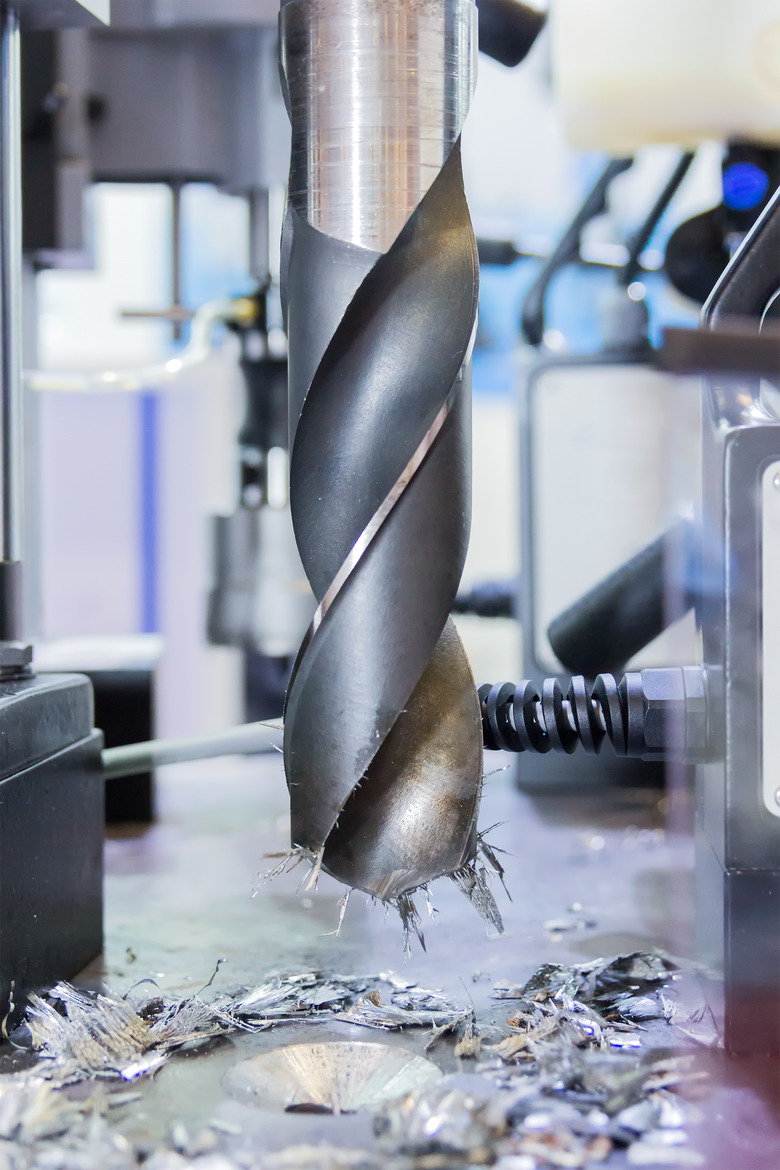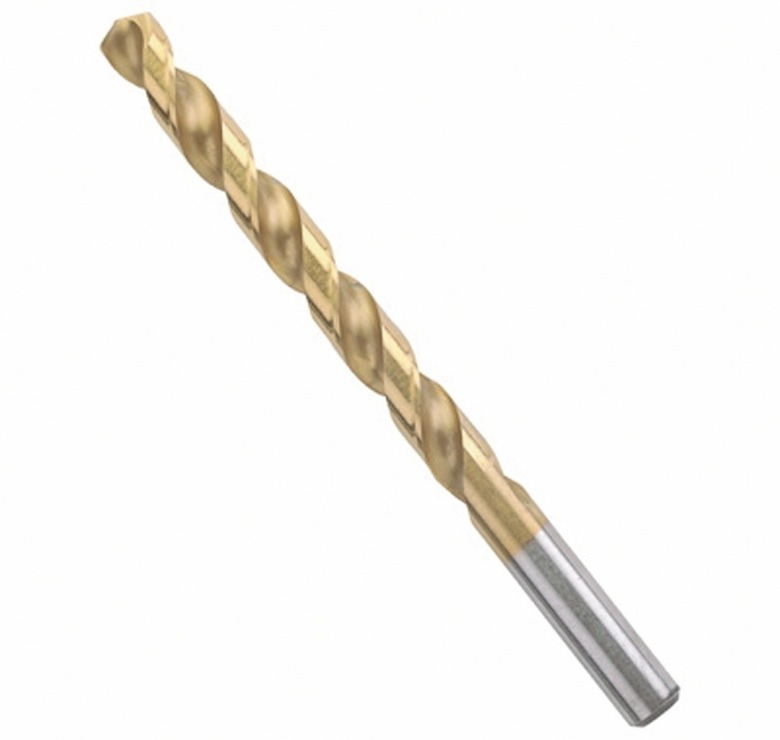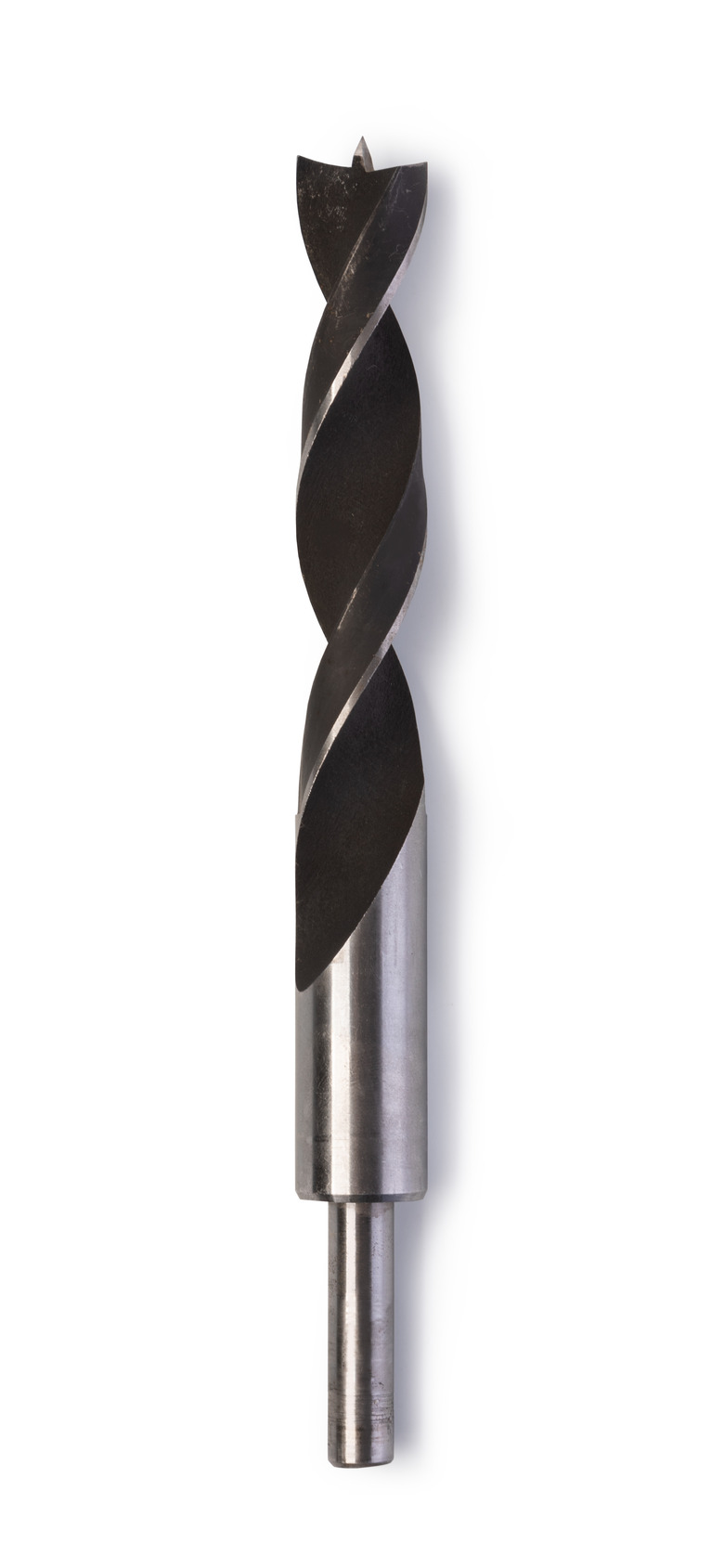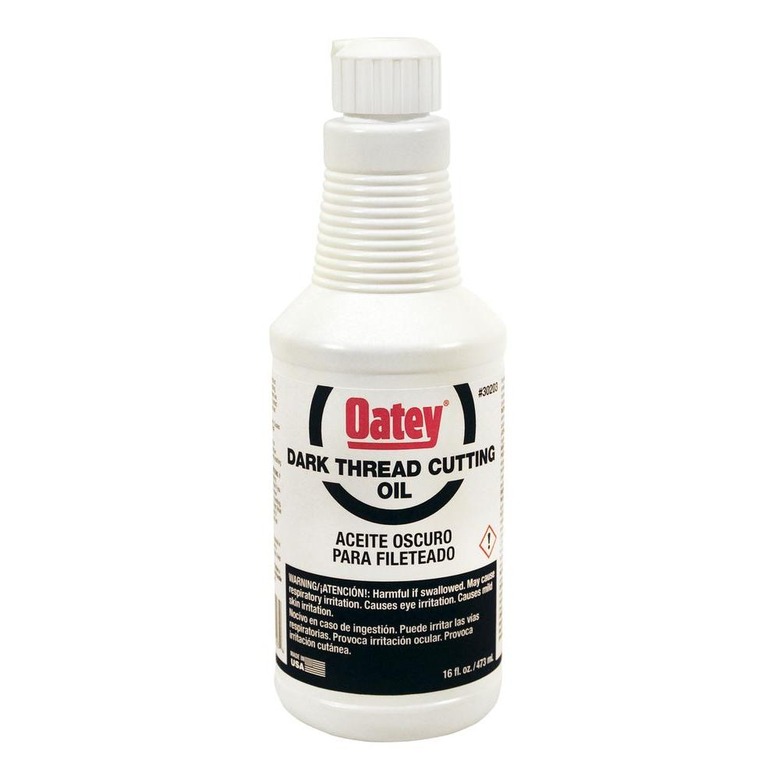How To Drill Through Metal
Drilling through metal isn't much more difficult than drilling through wood, but it requires some different techniques and a few more supplies. You can use any portable drill (or a drill press, if you have one), and the best drill bits are the same standard bits that also work for wood. The most important rules about drilling through metal are to follow a few basic safety tips and use the right techniques, such as drilling slowly to prevent overheating. The same methods work for most metal materials, from sheet metal to aluminum to thick steel plate.
Drill Bits for Metal
Most standard drill bits, sometimes called twist bits, are designed for wood, metal and plastic. These are the best choice for metal. But to be sure you have the right bit, look at its point; it should have two relatively flat—not steeply angled—cutting edges, and no protruding center point. Those with a center point are called brad point bits, and they are optimized for wood; using one on metal will quickly ruin the center point.
The next decision is the material. Standard twist bits come in four basic materials—they are, from cheapest to most expensive: high-speed steel (HSS), black oxide, cobalt steel and titanium. All of these are suitable for drilling metal, but it usually makes the most sense to focus on the two ends of the spectrum. That is, to go cheapest or best. If you have only a few holes to drill, you can get away with a cheap $2.50 HSS bit. On the other hand, if you have a lot of holes to make, or you're working with hard metals (such as stainless steel), or you just want to have a good metal bit on hand for the future, it's probably worth it to spring for a titanium bit. It will last much longer than all three other types, and it's only two or three more bucks than a cobalt bit. Black oxide and cobalt bits are only modestly more durable than HSS bits but can cost twice as much.
Another bit that's great for metal, specifically sheet metal or thin plate metal, is a step bit, which is a cone-shaped bit that drills a variety of hole sizes. Electricians commonly use them for drilling holes in metal electrical boxes and housings. For very large holes, up to several inches in diameter, you can use a hole saw—a cylinder with saw teeth that you use with a portable drill. Standard hole saws are fine for soft or thin metals, but for stainless steel saw and other hard materials, use a hole saw designed for stainless steel.
Safety Rules for Drilling Metal
Drilling metal doesn't produce sawdust, of course; it produces tiny, curly, sharp metal shavings that are hazardous to your skin and especially your eyeballs. So safety rule #1 is to wear safety glasses while drilling metal and while cleaning up afterward. It's also a good idea to wear heavy leather work gloves when handling metal.
Safety rule #2 is to clamp your work. Drill bits have a tendency to grab the metal just as they're breaking through the material. Sometimes the bit stops cold, which means that all the drill's spinning force is transferred to the workpiece. If the work isn't clamped or at least held securely, it can jerk or spin suddenly and forcefully—not a good thing when you're working with sharp-edged metal.
Tips for Drilling Through Metal
There are several special techniques that will help you make clean, accurate holes in metal without excessive wear on your drill bit.
1. Use a Sacrificial Board
A sacrificial board is a flat piece of scrap wood that you place under or on top (or both) of something you're drilling; you drill through it or into it when making the hole (that's the sacrifice). When drilling thin sheet metal, clamp the metal over a piece of sacrificial plywood (or other flat sheet good, like MDF or particleboard) to help prevent the bit from tearing up the hole. For the cleanest hole, clamp a second piece on top of the metal, making a sacrificial sandwich.
2. Make a Dimple
Drill bits can be reluctant about metal. Or maybe they're just distracted or they lack motivation. In any case, they tend to wander off as soon as the drilling starts. To prevent this, make a small depression in the metal at your drilling mark, using a pointed punch (center punch) and a hammer. A small, hard nail will work in a pinch. All you need is a small dimple that the tip of the drill bit can rest in. It will help keep the bit on track until it starts to cut the hole.
3. Add Oil
A metal bit cutting metal material creates a lot of friction; friction creates heat; heat dulls drill bits, fast. To reduce friction and heat, add a few drops of cutting oil, 3-in-1 oil (household oil) or motor oil (like the 10W-30 or 10W-40 you put in your car) to the metal before drilling. If it's a large hole, you may need to add oil again one or more times during the drilling process.
4. Drill Slow and Low
That means slow drill speed and low pressure. You should run most drills at about half-speed or slower; the bigger the bit, the slower it should spin. Maintain low- to moderate pressure on the drill, letting the bit do the work. Drilling too fast and bearing down on the drill creates excess heat that quickly dulls bits.
5. Stop Smoking
Smoke tells you that things are getting too hot, and that you're drilling too fast or too hard, or you're not using enough oil. If you see smoke, stop drilling and let the bit cool down, then add some fresh oil and start again, but slow and low this time.
6. Start Small
Drill bits make a hole by shaving away its edge, sort of like peeling an apple with a knife. Large bits have a hard time biting into the metal to create shavings, due to their large surface area, and this can slow the drilling process considerably. To speed things up, start with a small bit and work up incrementally to your final hole size. For example, if you need a 1/2-inch hole, use a 1/8-inch bit to start, then step up 1/8 inch at a time: 1/4, 3/8, then 1/2. You can make bigger jumps in some metals, but if you don't see the bit cutting into the edge of the hole, the bit is too big.
7. Clean Up the Hole
If the hole is left with a rough edge after drilling, clean it up with a drill bit that's a little larger than the hole diameter. Set the bit in the hole and twist it by hand to scrape off the metal shavings.



